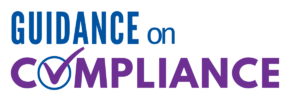LW Consulting, Inc. (LWCI) has completed numerous Mock Infection Control Surveys to assess the effectiveness of a facility’s infection control plans through the COVID-19 pandemic.
When conducting these surveys, we found that most facilities have developed high-level policies and procedures required to ensure the safety of their residents but are frequently missing some critical components of these policies and procedures.
We are excited to share the findings of these Mock Infection Control Surveys to help organizations keep residents and staff safe while also preparing for state inspections. Our findings have identified common problem areas that your facility can use to strengthen to improve and support your Infection Prevention and Safety Programs.
Environmental Services was frequently found to have vulnerabilities. Your facility should not only ensure that all policies are up to date, but they are being implemented as designed.
Let’s look at some specific areas where we found consistent challenges.
Non-Compliance with OSHA Hazard Communication
- Improper and Inconsistent chemical supplier mix rates and ratios applied to chemical usage. For example, employees were not aware, thus did not follow the correct chemical ratio mixing which impacts the chemical’s pathogen kill time and effectiveness to minimize cross contamination.
- Improper and incorrectly utilized chemical for the cleaning and disinfecting task being completed. For example, glass cleaner was utilized in place of an EPA approved disinfectant.
- Improper or missing labels on chemical dispensers and spray bottles. For example, one bottle was labeled disinfectant but was actually a diluted bleach solution. Incorrect labeling has the potential to also impact medical care provided if someone were exposed to the chemical and suffered an adverse reaction.
- Improper storage of non-facility approved chemicals on housekeeping carts. Facilities are required to maintain a Safety Data Sheet (SDS) log of all chemicals utilized within a facility. Any unapproved chemical utilized and/or stored at the facility in a housekeeping cart of housekeeping storage closet without the facility’s approval is a violation of OSHA and poses a safety risk to staff, residents, and visitors.
- Food, beverages, and personal belongings were stored on the housekeeping carts, which contained cleaning and disinfecting chemicals. These types of practices could lead to staff consuming toxic chemicals.
Non-Compliance with OSHA Bloodborne Pathogen
- Biohazard areas were not in a secure location preventing unauthorized access for visitors or residents.
- The biohazard storage area contained biohazardous bags which were stored directly on the floor.
- Noncompliance with hand hygiene when donning and doffing gloves. For example, staff were observed not washing hands prior to and upon removal of gloves before proceeding to the next cleaning assignment.
- Housekeepers using a loop mop to clean resident rooms gave varying explanations about the frequency of changing mop heads and mop water. To reduce the likelihood of cross contamination it is suggested that facilities use microfiber mopping programs. The microfiber system requires that the mop head be replaced multiple times per room and eliminates the potential of cross contamination that exists with the loop mop system.
- Chemical storage cabinets on housekeeping carts were unlocked and contained personal belongings including food and beverages. Chemical storage carts must be locked when not gathering or securing chemicals. Personal belongings may not be stored on housekeeping carts. Digestion of food and beverages that have been exposed to chemicals or pathogens could lead to considerable health issues.
- Housekeepers were observed with unapproved chemicals in their housekeeping carts and in their housekeeping closets. All chemicals must be approved by the facility and documented in the facility SDS Book.
- Housekeeping closets were observed unlocked allowing access to residents. Housekeeping closets must be kept locked to prevent access to dangerous chemicals and equipment.
- A housekeeping cart was pulled into a resident room while cleaning. Housekeeping carts should not be brought into resident rooms. The housekeeping cart is not clean and creates an unsafe environment.
- In one facility the clean laundry door opened directly onto the quarantine unit. Facilities must consider the layout of their facility and appropriate planning must be used in identifying workflow.
- Laundry employees sorting soiled linen did not have face shields or masks. Anyone sorting linen is required to use appropriate Personal Protective Equipment (PPE) regardless if there is a current pandemic.
- Some facilities lacked formal documentation on policies for housekeeping and laundry or lacked documentation on the training of staff.
How LWCI Can Help
Would your organization benefit from a mock infection control survey? Are you unsure where to start? LWCI can help in the following ways:
- Conduct a Housekeeping and Laundry Services Mock Survey and Risk Assessment specifically targeting Infection Control practices.
- Provide consulting and training services for Directors of Housekeeping and Laundry Services.
- Provides supportive services to facility leadership when responding to Environmental Services deficiencies.

